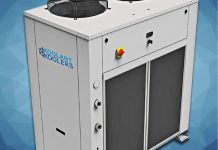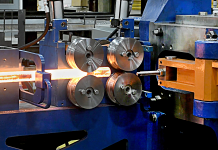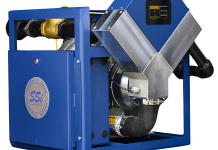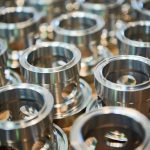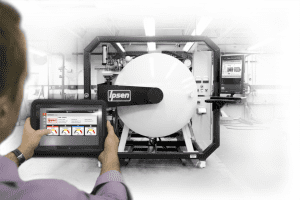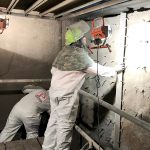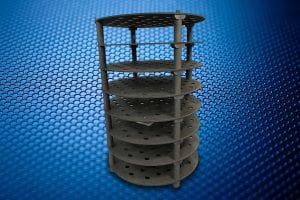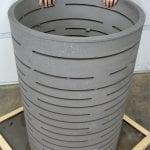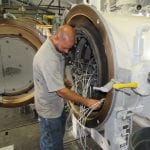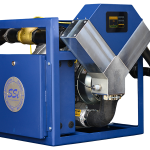Almost anything made today will — at some point — need an oven or furnace to get it across the finish line.
Through the decades, however, that essential heat-treating process has become more defined and exact, which means the ovens and furnaces needed to perform those tasks must also be designed and built to the proper specifications.
For 75 years, the Grieve Corporation has been offering a wide range of ovens and furnaces that can be built to a demanding industry’s specific requirements.
“If you’re making something, you need an oven,” said Frank Calabrese, vice president of the Grieve Corporation. “The processes are getting very specific now, so the equipment required needs to be very specific. It’s no longer a general oven fits all. The ovens are becoming very tailored to the customer’s processes, and we have to keep up with that.”
Large catalog
Grieve’s catalog of ovens and furnaces is vast, and the company continues to add to that, according to Calabrese.
“We make forced air convection ovens, batch ovens, and conveyor ovens up to 1,250 degrees Fahrenheit, and we make radiant heat furnaces up to 2,200 degrees Fahrenheit,” he said. “We have over 400 standard models with different sizes and temperature ranges. And then, we’ll also make custom equipment.”
Additionally, Grieve offers ovens and furnaces that can run with inert atmospheres, according to Calabrese.
“A lot of customers need to heat their products in an inert atmosphere — nitrogen or argon — to prevent oxidation of their parts, and we provide that type of equipment,” he said.
Another important part of Grieve’s product offerings are the clean room ovens that are needed in the pharmaceutical industry, according to Calabrese.
“We offer ISO-5 ovens for processes where eliminating particle contamination is required,” he said.
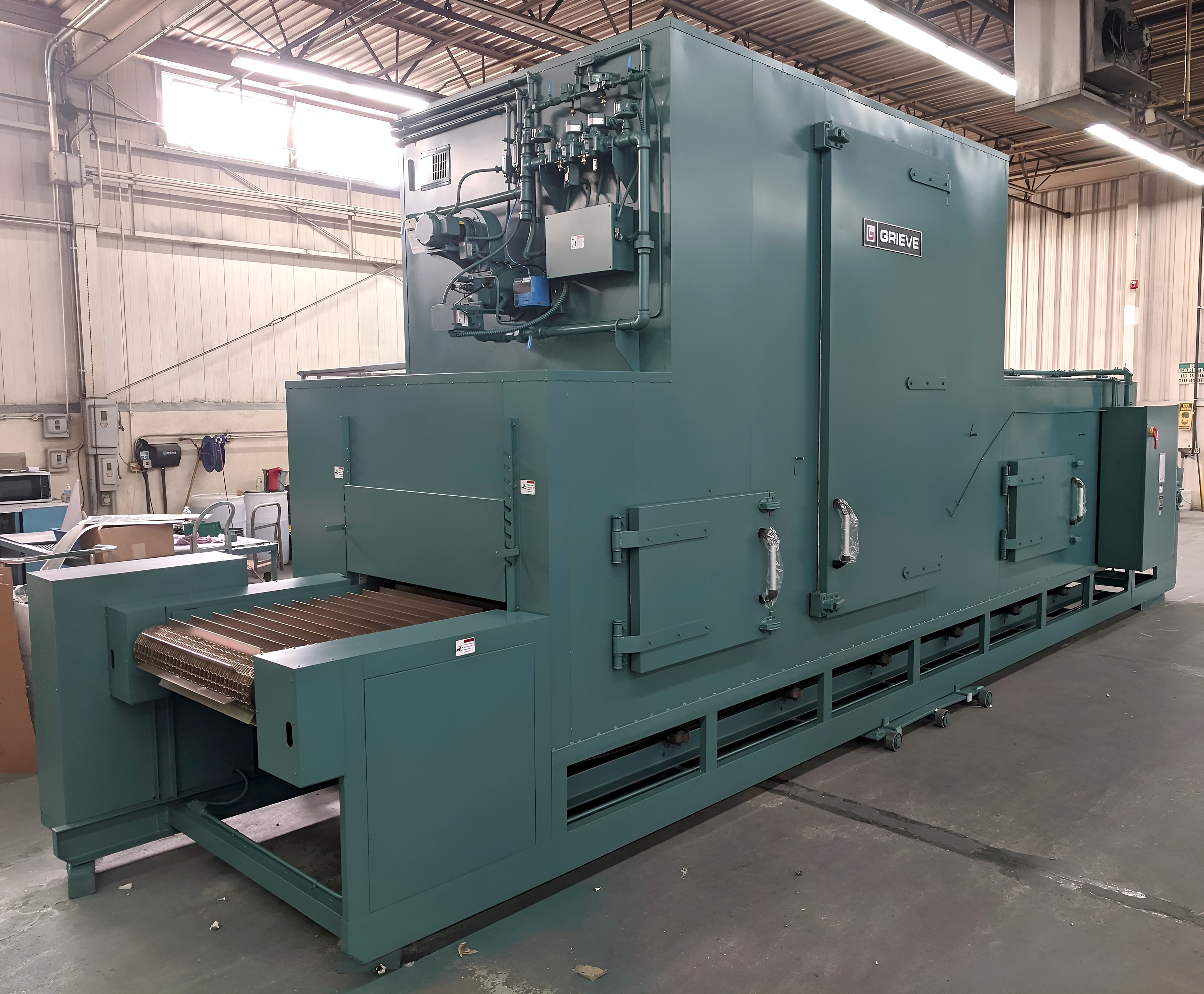
Customized equipment available
Even with all of Grieve’s standard product offerings, oftentimes a customer will need something that is more customized, according to Calabrese, and that can mean anything from modifying an existing model to building something completely from ground up.
“If a customer needs a special workspace size or a special loading method, maybe roller hearths or a continuous conveyor oven, we’ll make that,” he said. “We can take a standard oven and make it bigger or design it with more heat and more airflow if they have a large load. Or we can start from scratch with an oven that is made specifically for that customer’s unique process.”
In addition to serving the pharmaceutical industry, Grieve supplies ovens for the metalworking industry as well, according to Calabrese.
“Our strongest market is metalworking,” he said. “Anybody that makes anything in the metalworking industry would need an oven. Stress relieving metal parts is a common process. Springs, like your garage door springs, have to be stress relieved. If they’re not properly stress relieved, they’ll break.”
Grieve ovens are also used to bake paint on all kinds of parts, particularly metal, according to Calabrese, as well as in the mining industry, where they are used to dry ore samples.
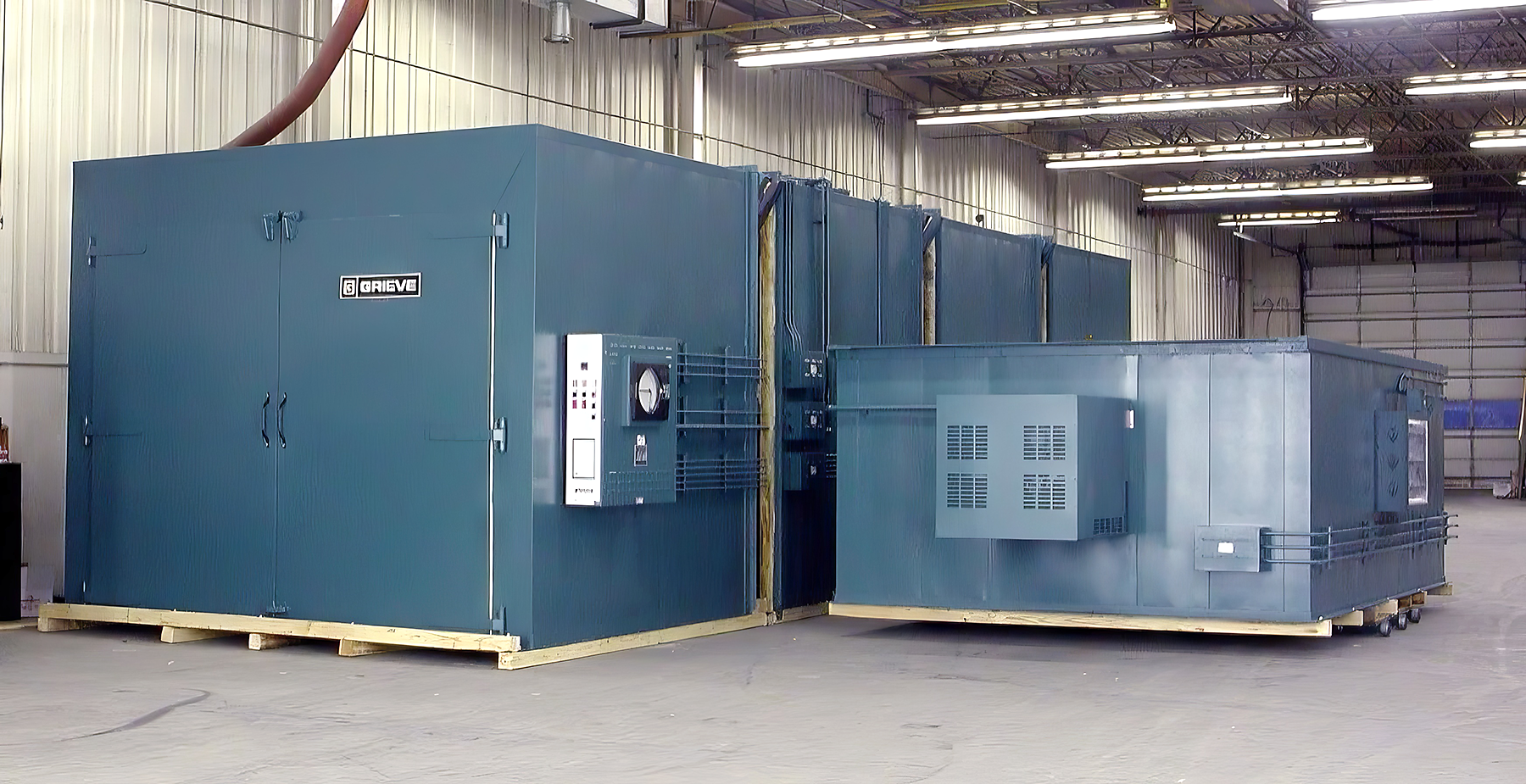
Maintaining a strong brand
To have been in business for 75 years obviously points to a founding philosophy that worked — and worked well, according to Calabrese.
“We maintain a strong brand and the demanding quality standards from start to finish,” he said. “We test everything. We have a very rigorous test procedure. And then, we want to increase our market share by developing a talented team and using the industry’s best practices to manufacture our products.”
That mindset for its staff and products has aided in Grieve’s evolution through its storied history, according to Calabrese.
“Something that wasn’t around in 1949 is the heat-treating specification for the aerospace industry — AMS2750,” he said. “It requires certain parameters, certain temperature uniformity, certain heat-up rates, and we’ve adapted our equipment to meet those specifications.”
Dealing with customers’ needs is an important aspect of Grieve’s services, and the company has a good system in place to handle those, according to Lynn Niemi, business support manager at the Grieve Corporation.
“We’ve got a ‘request for quotation’ form,” she said. “If somebody needs a custom oven or furnace, we’ve got a detailed list of questions that we go through with them. For example, with a conveyor oven, we ask them: How large is their part? How long does it need to dwell in the heated portion of the oven? How many parts do they want to get through in a certain amount of time? We ask questions that are tailored to find out what they’re doing, and how we can build the right piece of equipment for them. It should have the correct air flow to get the best heat all around their part. We try to anticipate things that are going to be important. Will they be able to fit the oven they want in the space they have allocated? Would the oven benefit from the addition of a tower light or a timer? Our questions often get them to think about things that they hadn’t thought of before.”
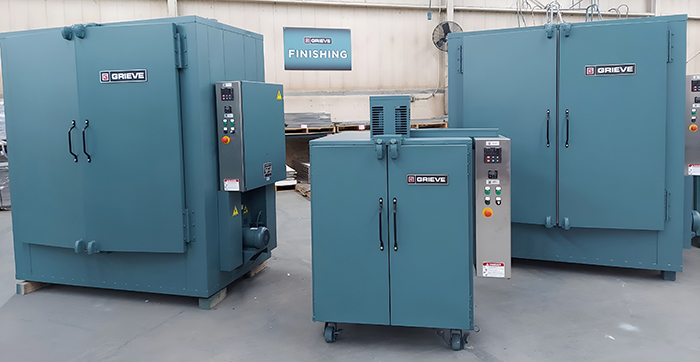
Celebrating 75 years
The Grieve Corporation began in 1949, when George Price Grieve started a five-man shop in Chicago making short-run sheet metal parts for the radio and TV industry. But once he was approached to build an oven, that transformed the business forever, according to Calabrese.
“The very first oven Mr. Grieve made was called the CR-225,” he said. “It was for Complete Reading — that’s where you get the CR — and 225 was the temperature of the oven — 225 degrees Fahrenheit.”
Calabrese’s father, Pat, came onboard as a sales manager in 1958, and he helped Grieve with gas-fired ovens, according to Calabrese. With the expertise of the two of them, the Grieve Corporation continued to grow through the decades.
Since then, the company has moved from its humble beginnings in a small Chicago shop to a 100,000-square-foot manufacturing facility in Round Lake, Illinois, with about 100 employees.
Beyond the company’s commitment to the industry, Grieve has also had a hand in civic achievements as well. Company founder Grieve was a battalion commander in the Pacific during WWII, which gave the company management the incentive to finance a local veterans’ memorial in downtown Round Lake.
Recently, Doug Grieve has taken his late father’s place as chairman of the board, and Tony Caringella has been named company president.
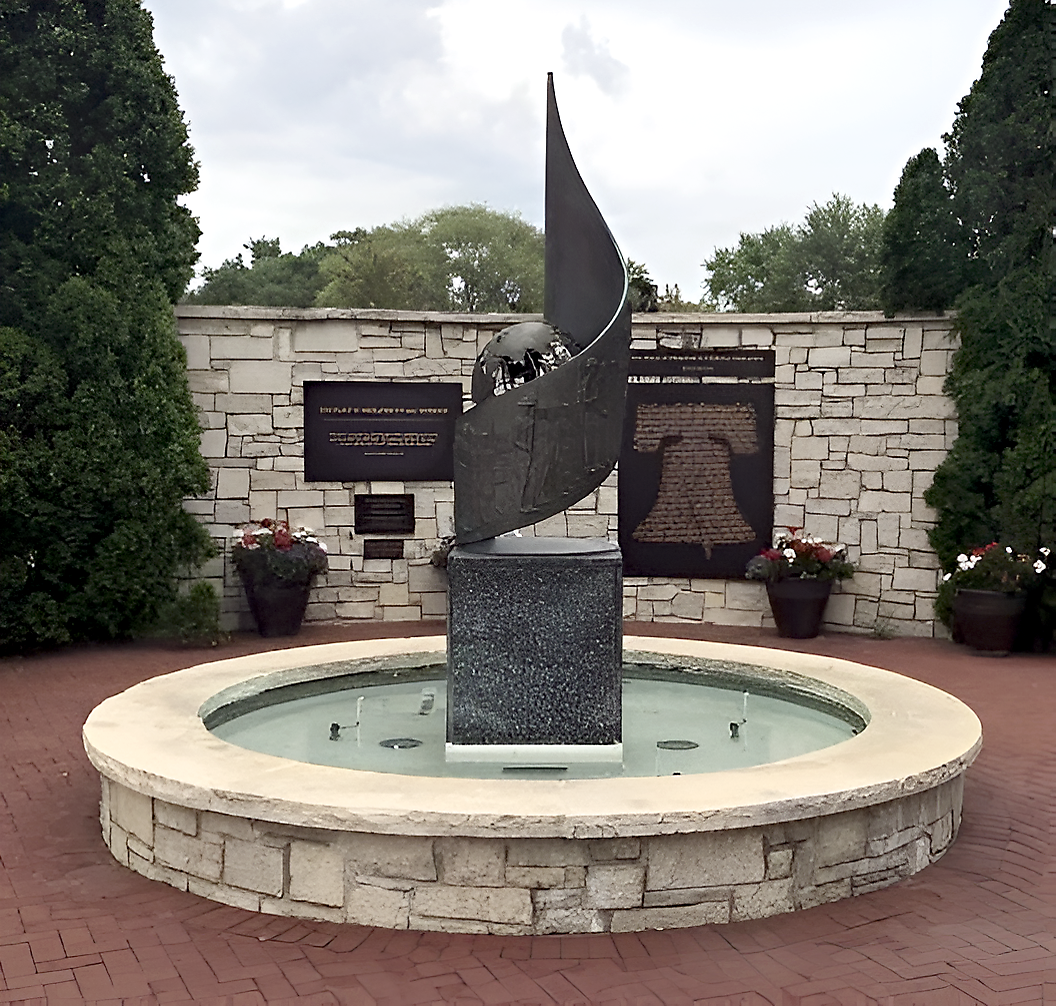
Looking to the future
A well-rounded company like Grieve is constantly on the lookout for ways to stay in step with the industry it has served for so many years. To that end, Calabrese said their team always keeps an eye on the future.
“We’re designing new air flows,” he said. “Years ago, we had a couple of different air circulation patterns, and now, we’ve got several including vertical down. Some customers also require PLCs and programming temperature controllers to control the rate of heat up and cool down on their equipment. Cool down is now becoming a very important property when people buy ovens, and they have to cool down at specific rates. We have to adapt to that, and provide that type of equipment on our ovens and have it happen automatically and be a part of the process. Also, I believe there’s going to be more need for cleanroom equipment, especially with the pharmaceutical and semiconductor sectors. These are areas where there can’t be any contamination.”
Calabrese also pointed out that automation will be a critical component of future heat-treating needs.
“Our ovens are being loaded and unloaded by robotics, and we have to design the doors or the shelves or the trays or whatever to allow for that,” he said. “We have sold equipment to different automation companies, and they integrate their robotics to our ovens, or vice versa. That’s becoming more and more common.”
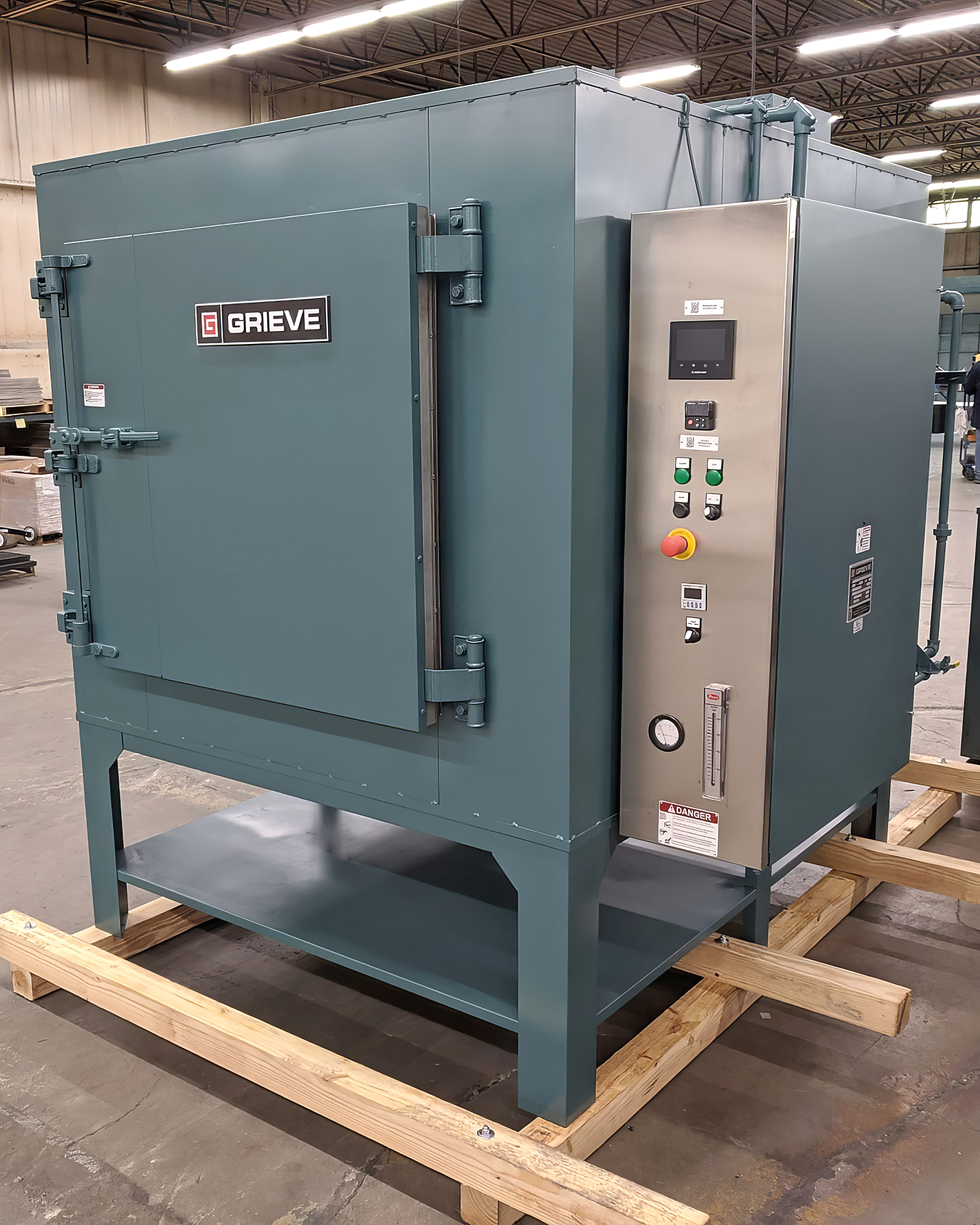
Quality
Grieve’s many facets may sound complicated on the surface, and it may seem like it requires a massive juggling act to maintain, but Calabrese emphasized that everyone on the team is on the same page as to the simple secret it takes to keep Grieve a successful, thriving entity in the heat-treating industry.
“We had a long-range planning meeting where we meet off-site and all the managers sit and talk and go through what we need to do,” he said. “We all had priorities, but our top priority — and everyone agreed with this — was quality. That was the No. 1 thing that we all voted on — that we have to keep up with the quality that this company has had for the last 75 years.”
MORE INFO www.grievecorp.com









